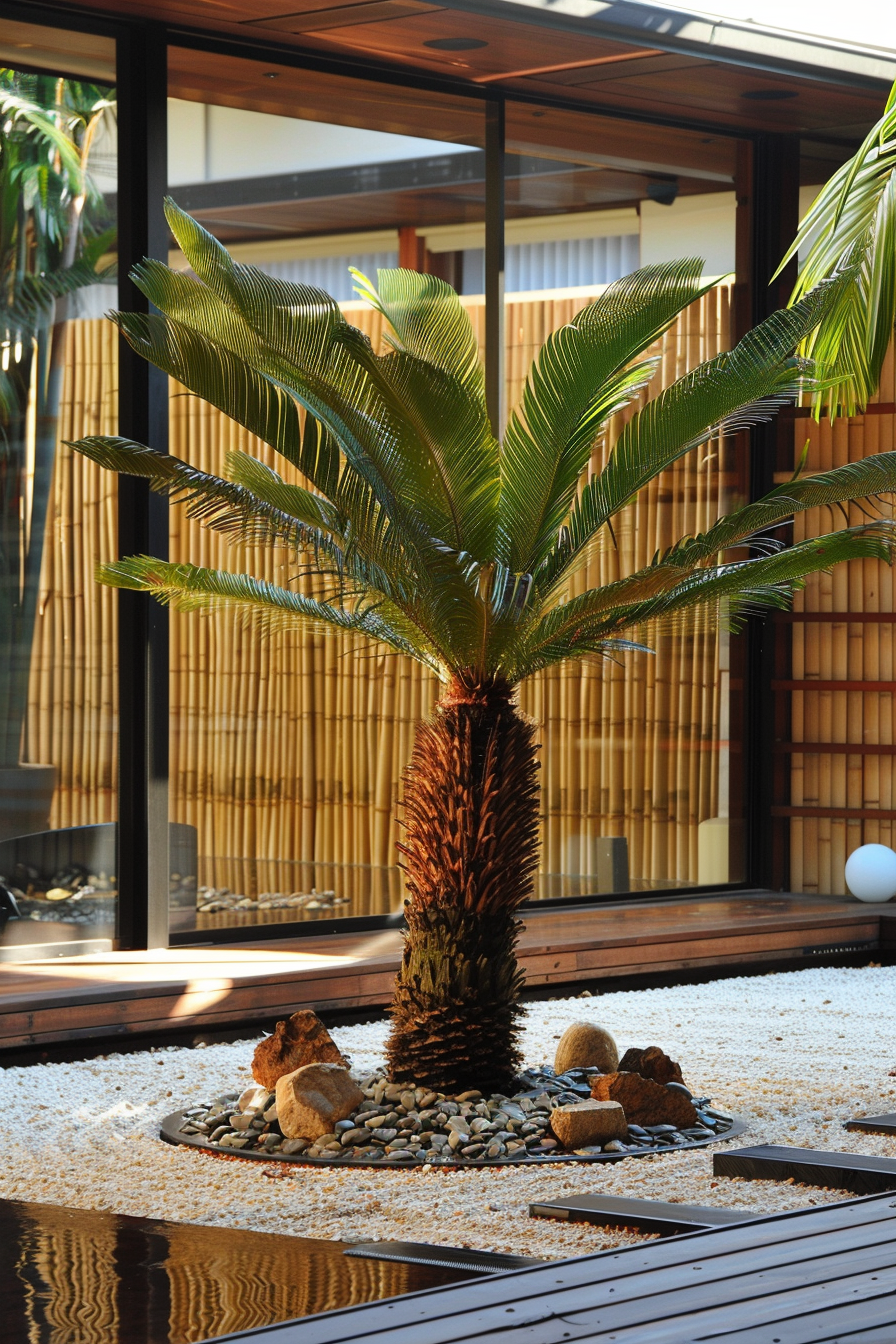Style Tips Taken from Courtyard Gardens in Modern Japanese-Style Homes
Did you know that modern Japanese homes often feature lush courtyard gardens, not as outdoor spaces, but as living elements integrated into the interior? Unlike typical Western homes, these small pockets of greenery are central to the living experience—providing a soothing escape in the middle of a bustling city. This seamless blend of nature and architecture creates a calming environment, embodying the essence of minimalist elegance.
If you’re intrigued by this unique fusion, transforming your home into a modern Japanese sanctuary with a courtyard garden-inspired style is within reach, even on a budget. Here’s how you can infuse this serene aesthetic into your space.
Key Elements of Modern Japanese Homes with Courtyard Gardens
1. Embrace Minimalism and Natural Materials
At the heart of modern Japanese interiors is minimalism. Spaces are open, uncluttered, and focused on simplicity. Neutral tones—think soft whites, beiges, and earthy hues—dominate, creating a sense of balance and calm.
Natural materials are essential to this style. Wood, stone, and bamboo are commonly used for flooring, furniture, and accents. These materials echo the organic feel of a garden and help maintain a harmonious connection between the indoor space and the courtyard.
2. The Power of Courtyards and Greenery
The star of a Japanese courtyard home is, of course, the garden. Courtyards in Japanese homes are typically small, enclosed spaces featuring plants like bamboo, ferns, moss, or bonsai. The focus is on simplicity—nothing overly ornamental. The goal is to create a meditative, tranquil area that connects the inhabitants with nature.
Incorporating greenery indoors through potted plants, vertical gardens, or even small zen garden bowls can evoke this style in homes without outdoor courtyards. The greenery adds texture and life to the otherwise minimalist spaces.
3. Sliding Doors and Natural Light
Traditional Japanese homes often feature shoji—sliding doors made of wood and translucent paper. These doors allow natural light to gently diffuse into the room, creating a soft, inviting atmosphere. Modern homes may use updated versions of shoji, swapping out paper for frosted glass or lightweight fabric.
Maximizing natural light is crucial in achieving this style. Large windows, skylights, and open floor plans help bathe the space in sunlight, reinforcing the connection to nature.
4. Balance and Symmetry
Japanese design values harmony, which is reflected in balanced furniture arrangements and symmetrical decor. Every piece of furniture serves a purpose and is thoughtfully placed. Furniture tends to be low-profile, often sitting near the ground, such as tatami mats or low coffee tables, promoting a feeling of grounding and connection to the earth.
Quick Wins and Budget-Friendly Tips
Not ready to overhaul your home? Here are some easy and affordable ways to achieve the look:
- Add a Zen Garden Bowl: For an instant Japanese vibe, place a small Zen garden bowl on your coffee table. Fill it with sand, smooth stones, and tiny bonsai for a serene focal point.
- Bring in Natural Elements: Incorporate bamboo, wooden accents, and stone decor to mirror the natural materials central to Japanese design. You can even source budget-friendly bamboo accessories like trays, baskets, or blinds.
- Use Neutral Tones: A quick paint job with warm, neutral colors can do wonders to create a calming backdrop for your home.
- Introduce Indoor Plants: Bonsai trees, small ferns, or succulents placed around your home will give you that courtyard garden feel without needing outdoor space.
- Update Lighting: Swap harsh lights for softer, warm-tone lighting to emulate the natural glow of the sun filtering through shoji doors.
Pulling the Look Together
Here are some final tips to help you tie the style together:
- Declutter Ruthlessly: Less is more. Keep surfaces and shelves as clear as possible to maintain a minimalist vibe.
- Stay Symmetrical: Arrange your furniture symmetrically or balance it around a central focal point for a more peaceful, harmonious look.
- Layer Textures: Balance the sleekness of your minimalist furniture with soft cushions, woven textiles, or a tatami mat to add warmth and comfort.
- Incorporate Water Elements: A small indoor water feature can add to the tranquil atmosphere, mimicking the serene feel of a courtyard garden.
1. Embrace the Zen of Moss
Sphagnum moss and other moss species such as Haircap Moss and Feather Moss can turn your courtyard into a serene green carpet. Moss is a staple in Japanese gardens, symbolizing simplicity and grounding. Its rich textures and deep hues create a sense of tranquility and timelessness. Consider creating moss patches or ground covers, especially in shaded areas where they thrive. Moss is not only beautiful but also low-maintenance, making it perfect for busy lifestyles.
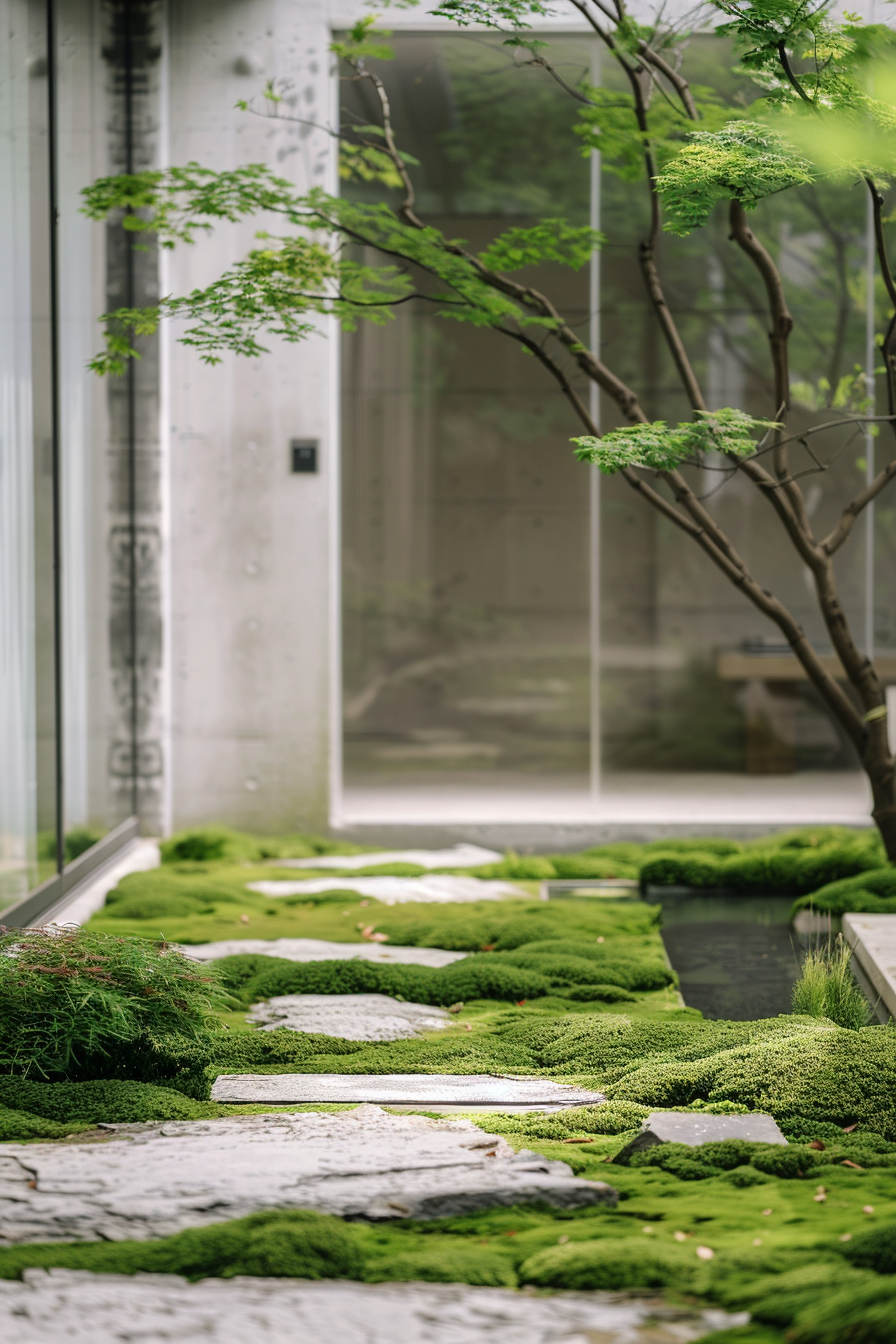
2. Create Privacy with Bamboo Screens
Bamboo, whether Phyllostachys, Bambusa, or Fargesia, is ideal for creating natural screens and adding height and structure to your garden. Use bamboo plants as living fences or incorporate bamboo panels for a more structured look. Their vertical growth patterns contrast beautifully with lower garden elements and provide privacy without feeling closed off.
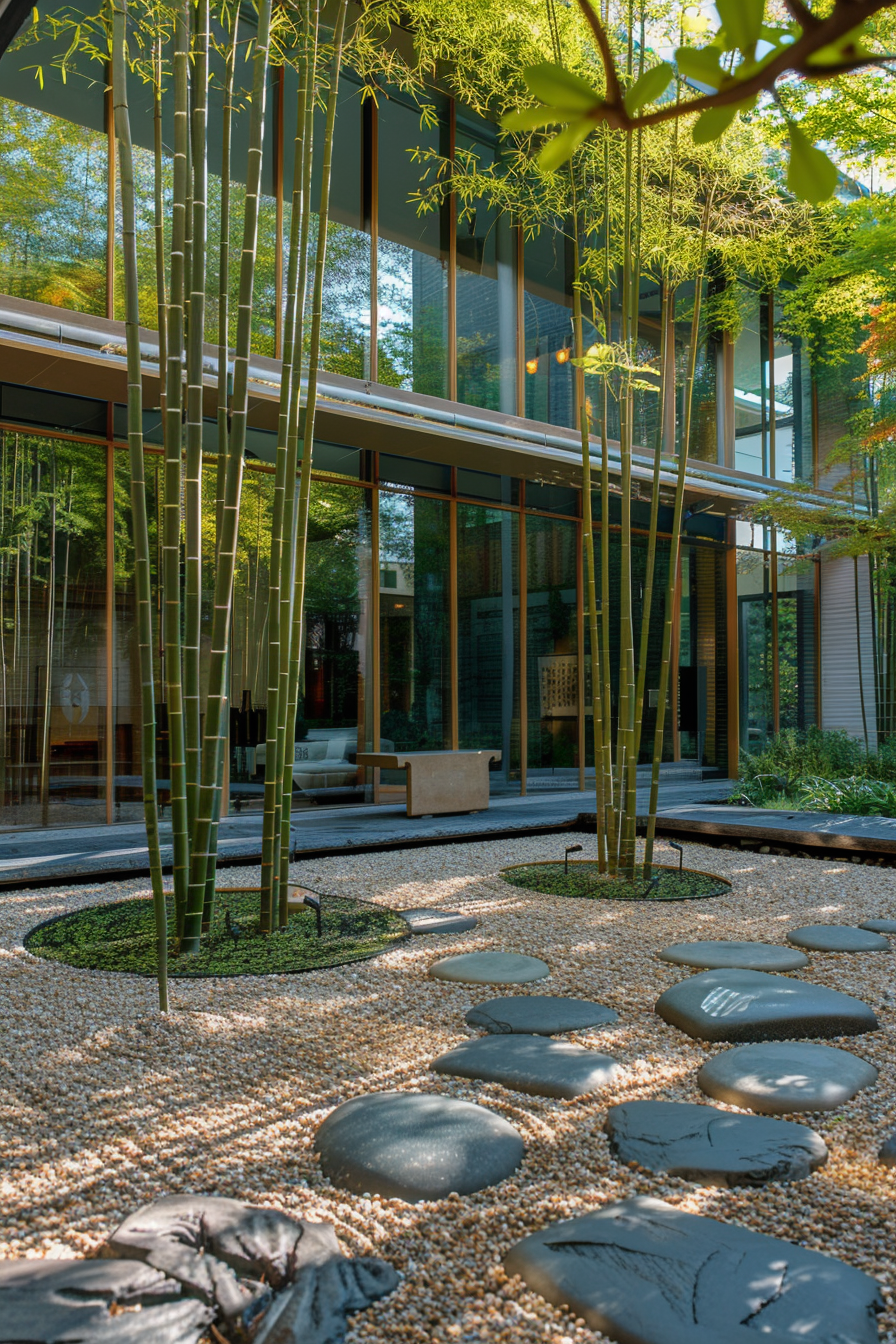
3. Highlight the Elegance of Japanese Maples
The delicate leaves and vibrant colors of Acer palmatum (Japanese Maple) are perfect for adding focal points and seasonal interest to your garden. Plant them where they can be appreciated from both inside and outside your home. Their graceful form and striking foliage provide a beautiful contrast to the clean lines of modern architecture.
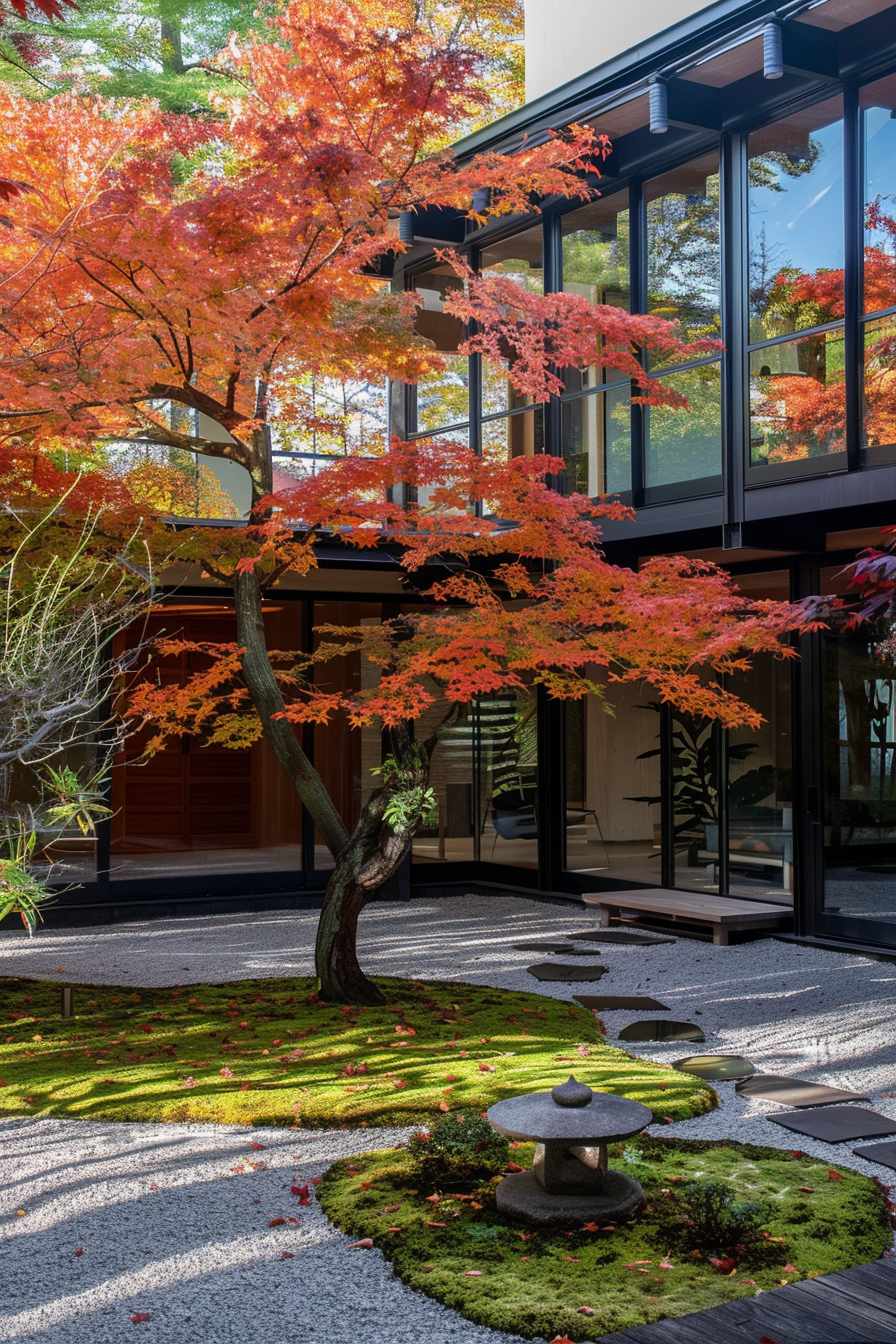
4. Incorporate Japanese Black Pines for Structure
Pinus thunbergii (Japanese Black Pine) adds a dramatic and sculptural element to your garden. These pines are often pruned into cloud-like shapes, creating a distinctive look that is both traditional and contemporary. Their dark green needles provide a beautiful contrast to lighter elements in the garden.
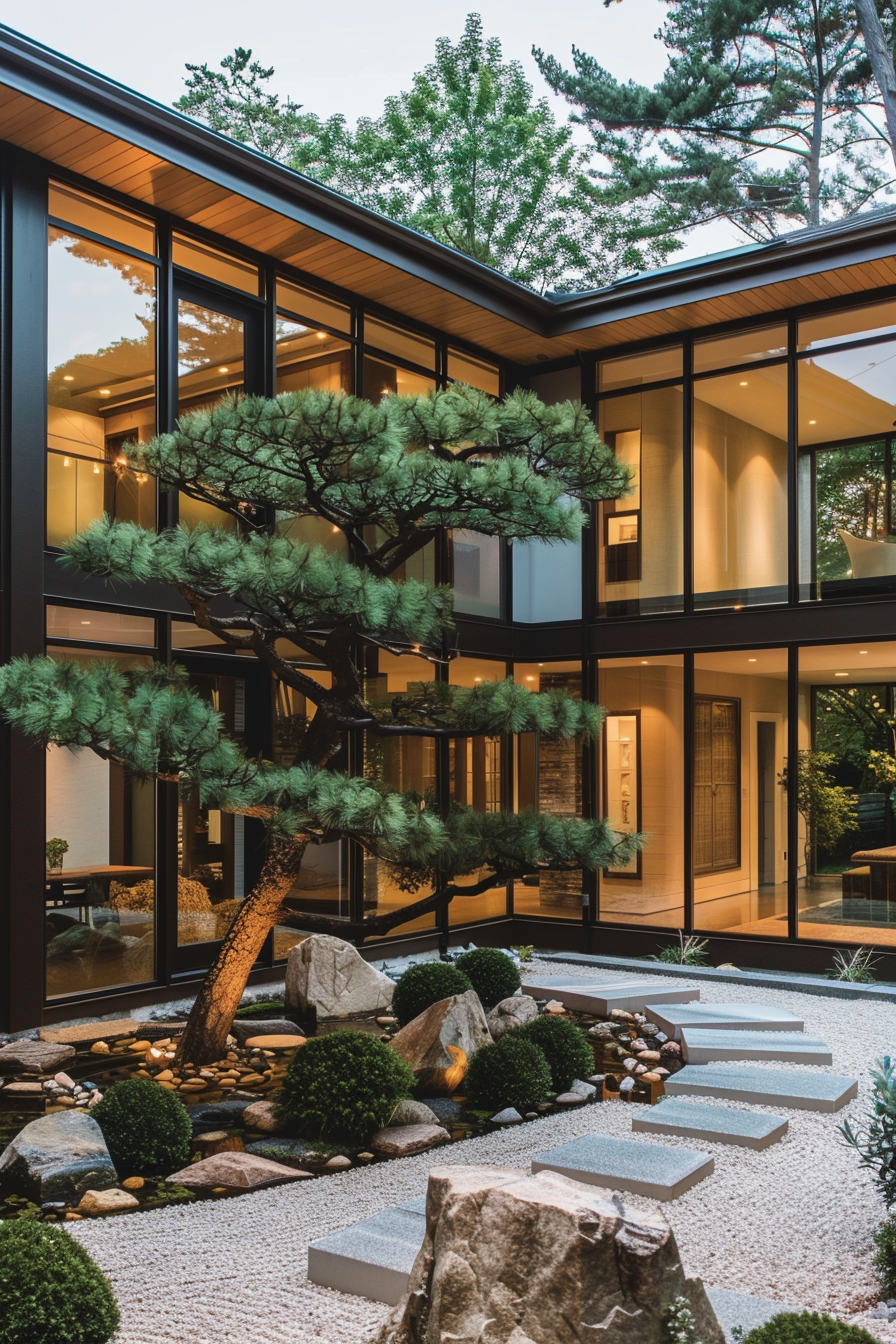
5. Soften the Scene with Japanese Painted Ferns
Athyrium niponicum (Japanese Painted Fern) offers a delicate and colorful foliage that can soften the edges of your garden. Plant them along pathways or near water features to add texture and a touch of elegance. Their silvery-green fronds create a beautiful contrast with darker plants and stones.
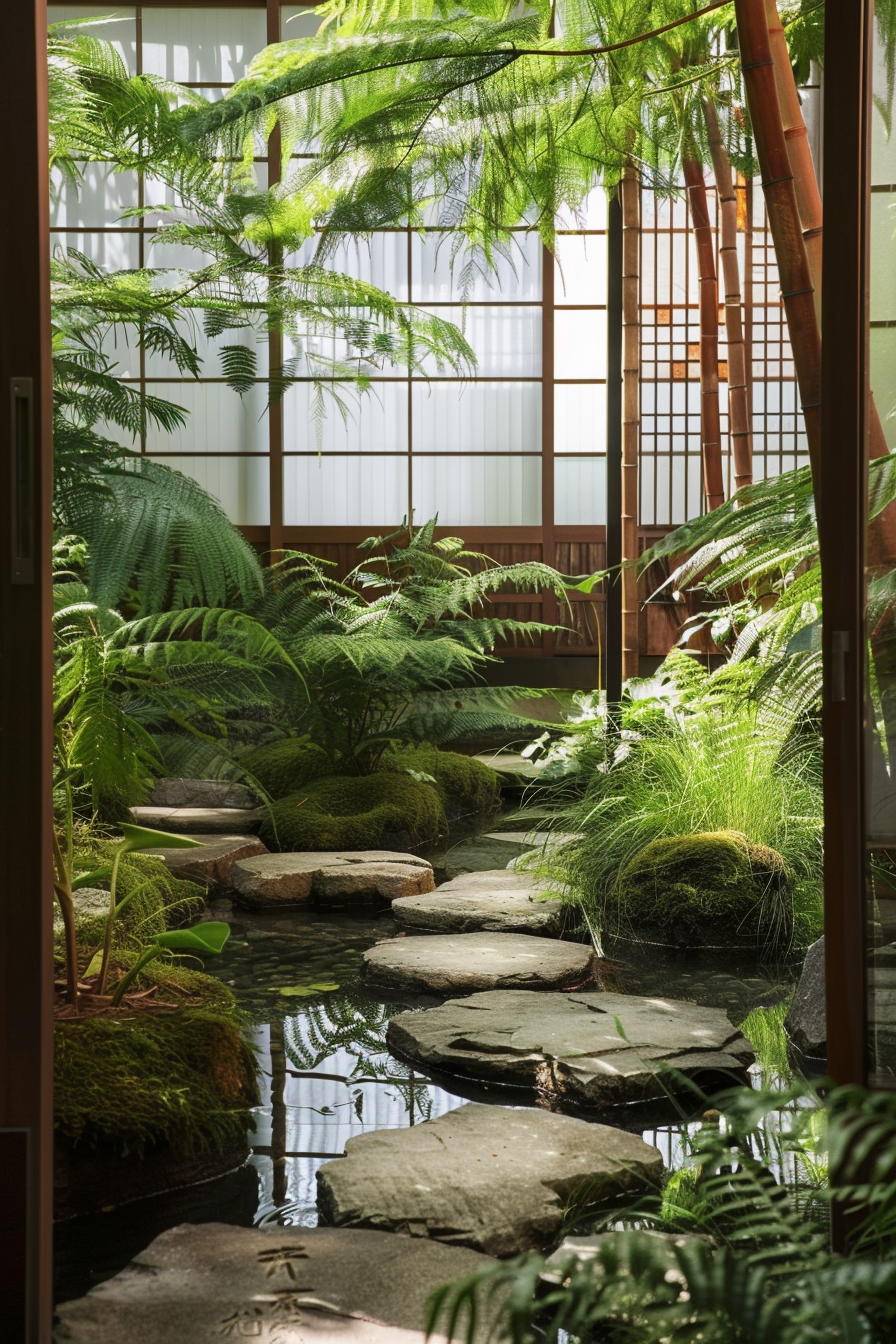
6. Add Serenity with Water Features
Incorporating water elements such as ponds, streams, or waterfalls enhances the peaceful ambiance of a Japanese courtyard garden. Complement these features with aquatic plants like Nelumbo nucifera (Lotus) or edge plants like Ophiopogon japonicus (Dwarf Mondo Grass) to create a harmonious scene.
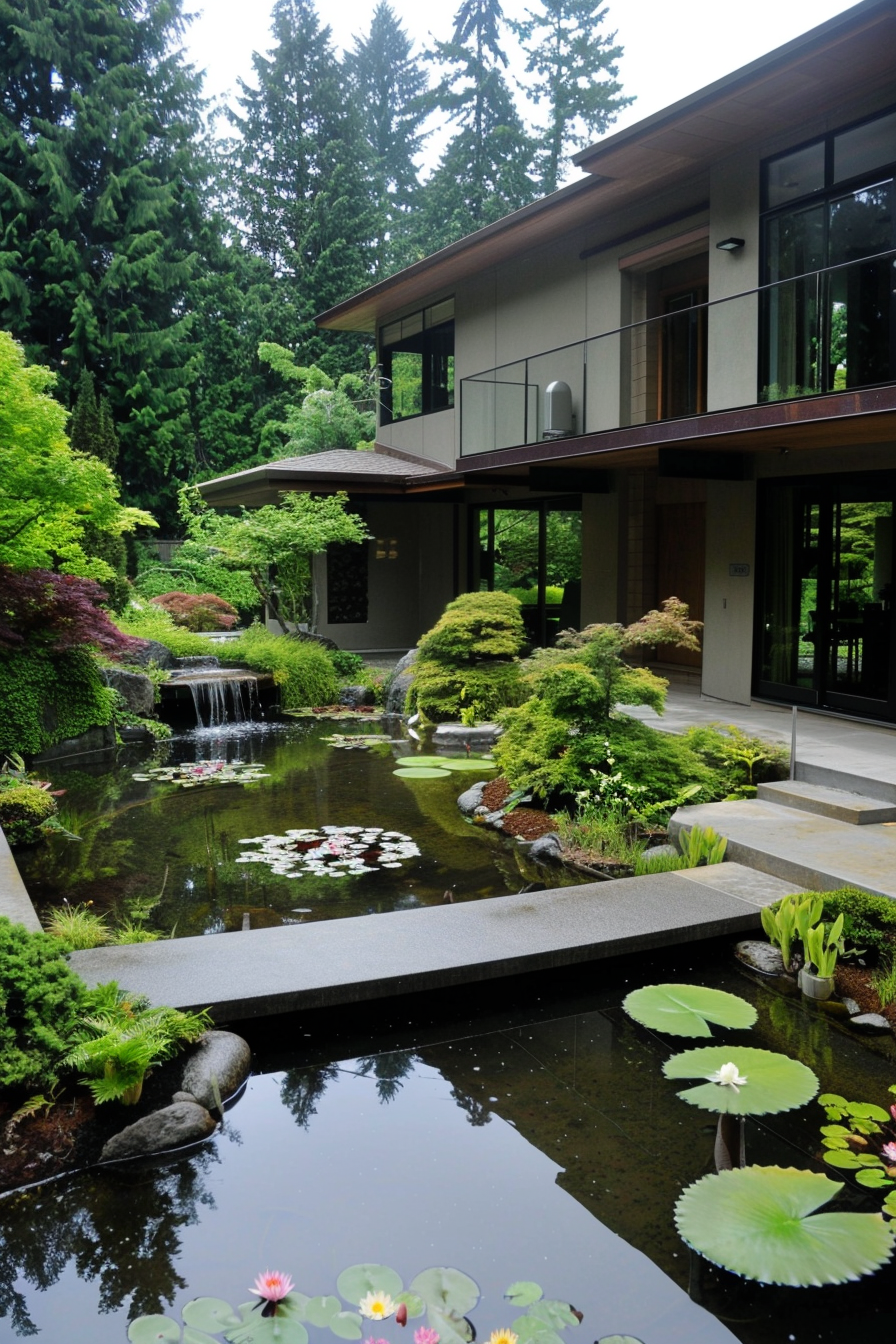
7. Use Cherry Blossoms for Seasonal Beauty
Prunus serrulata (Cherry Blossoms) are iconic in Japanese culture and provide breathtaking beauty in spring. Plant cherry trees where they can be enjoyed from inside and outside. Their delicate pink flowers are a stunning contrast to the structured elements of a modern home and create a picturesque scene when in full bloom.
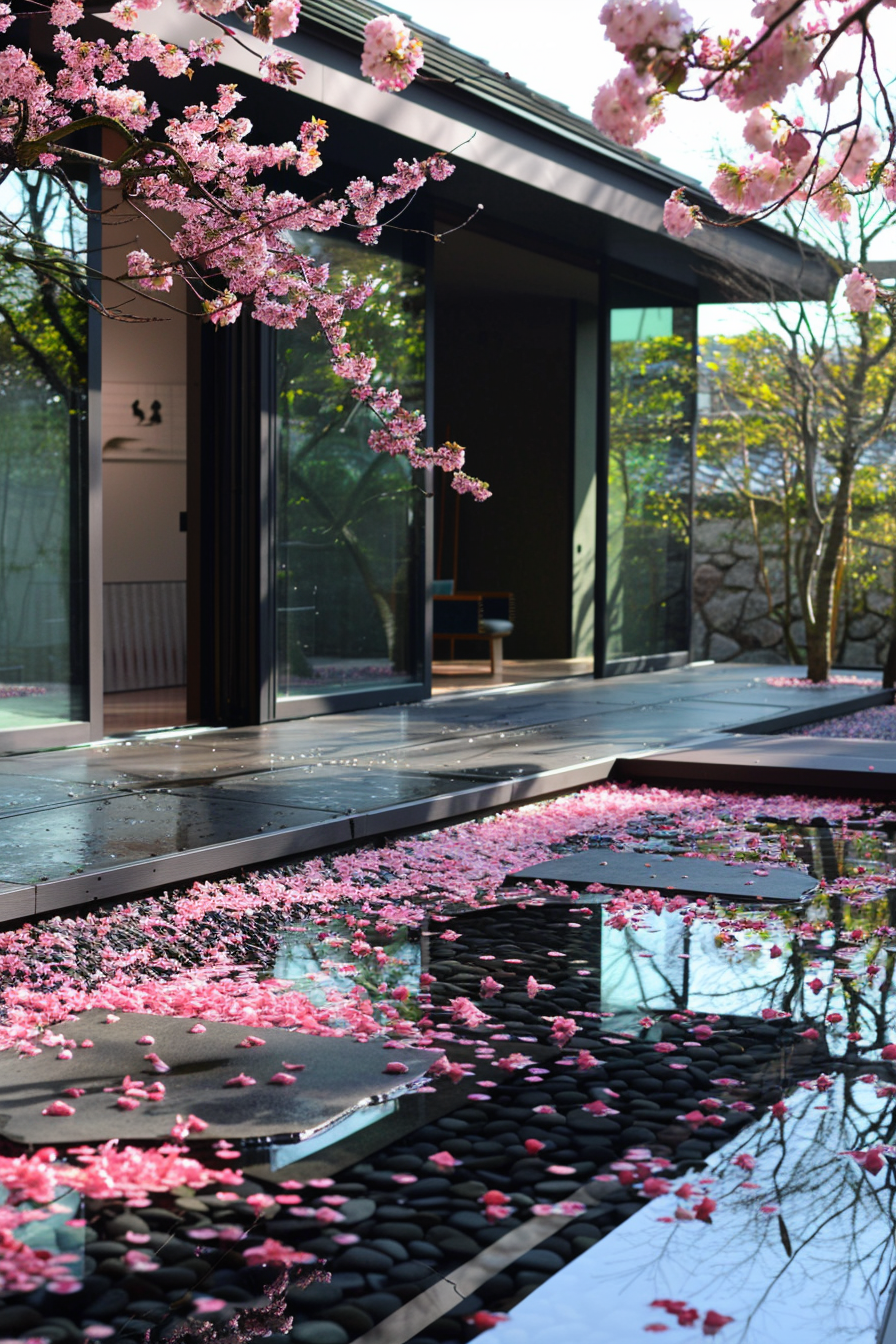
8. Introduce Japanese Cedars for Evergreen Appeal
Cryptomeria japonica (Japanese Cedar) adds year-round greenery and can be used as a backdrop for other plants. Their tall, conical shape and soft, feathery foliage provide structure and depth to the garden. Use them to frame views or as a living fence to create a sense of enclosure and privacy.
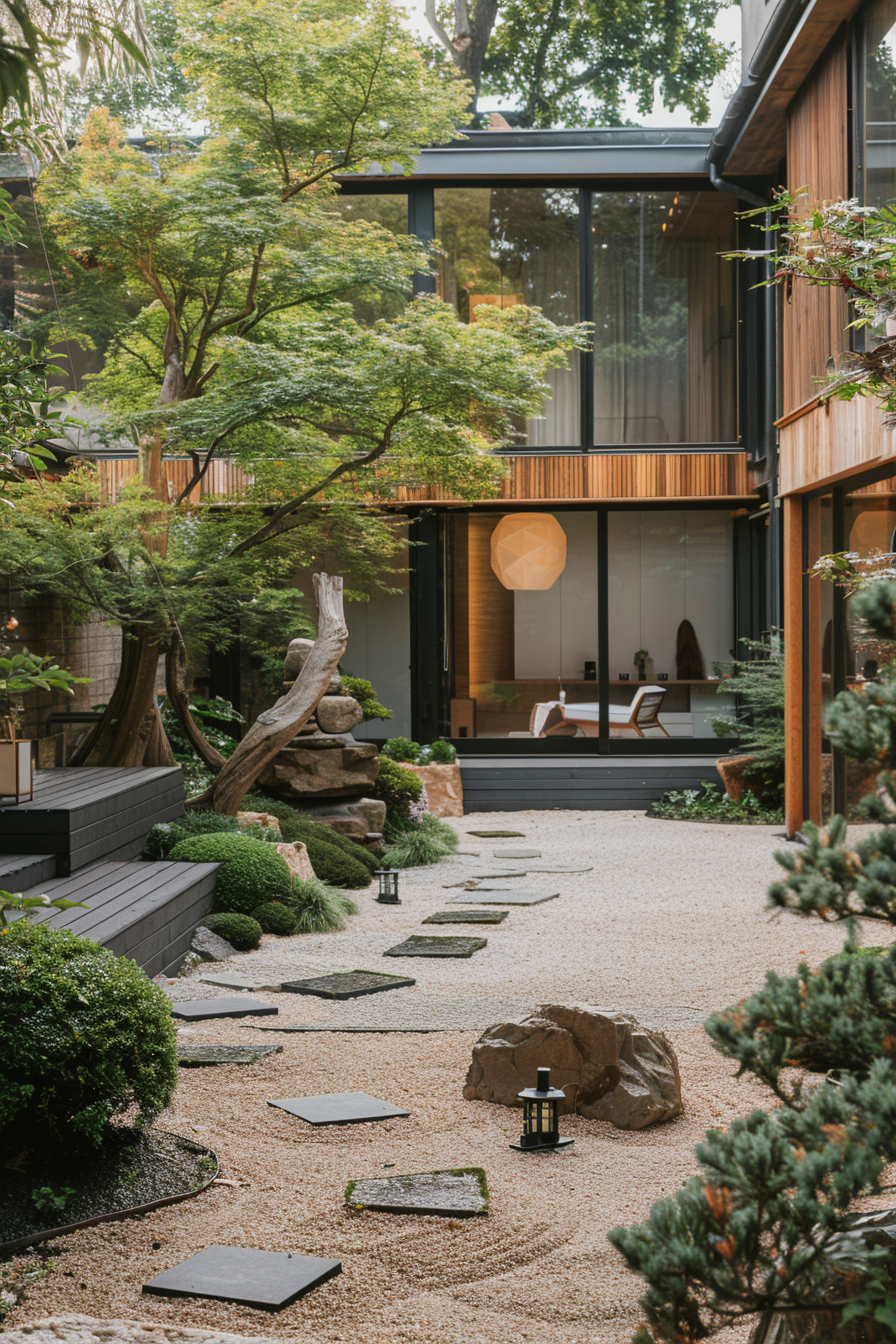
9. Enhance Pathways with Japanese Irises
Iris ensata and Iris laevigata (Japanese Irises) are perfect for adding color and elegance along garden paths and water edges. Their tall, graceful blooms in shades of purple and blue stand out beautifully against green foliage and stones. Plant them in clusters for a dramatic effect.
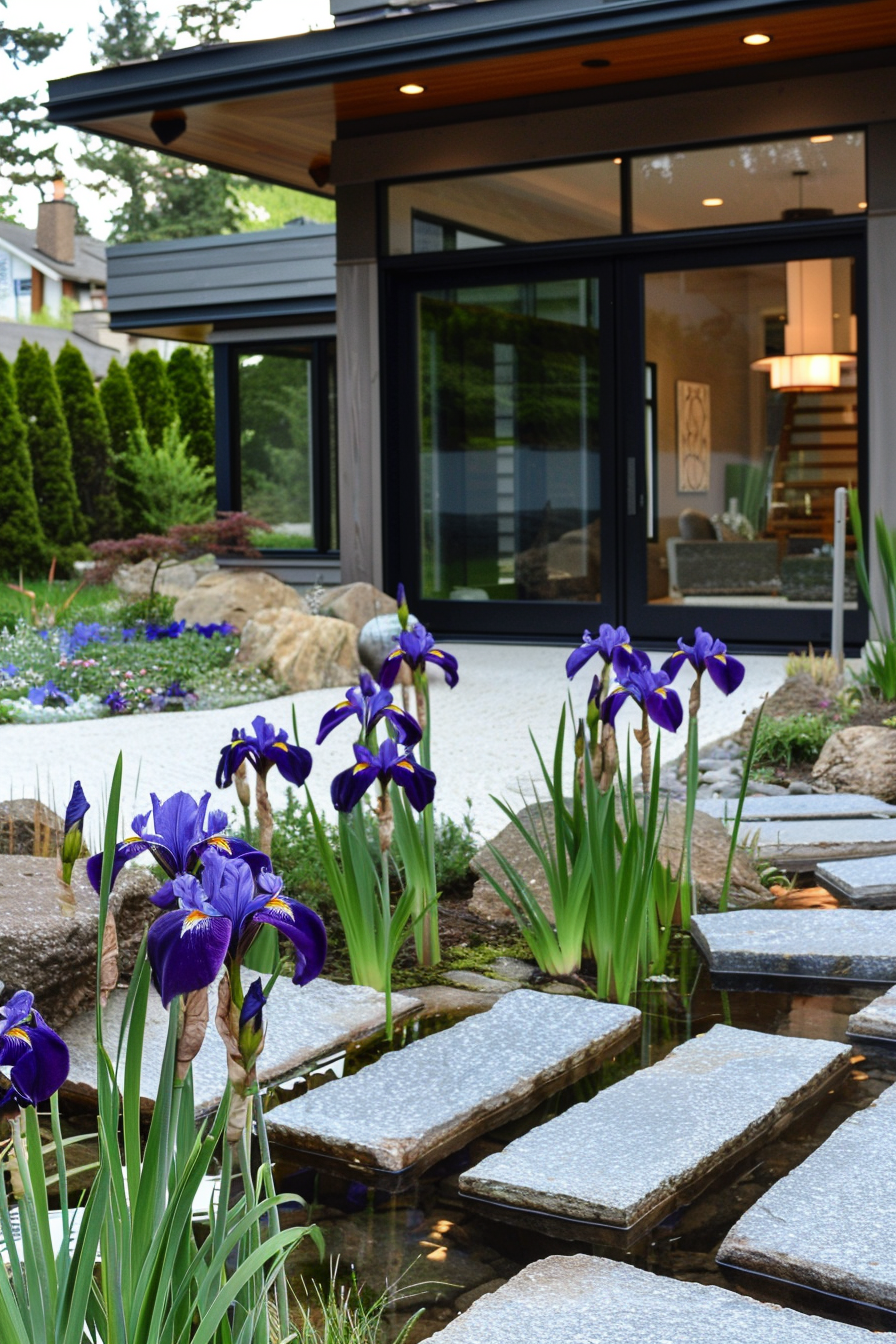
10. Create Cozy Corners with Azaleas
Rhododendron spp. (Azaleas) are perfect for adding vibrant color and lushness to your garden. Use them to create intimate corners or to frame seating areas. Their bright, showy flowers in shades of pink, red, and white provide a striking contrast to the greenery and can brighten up any space.
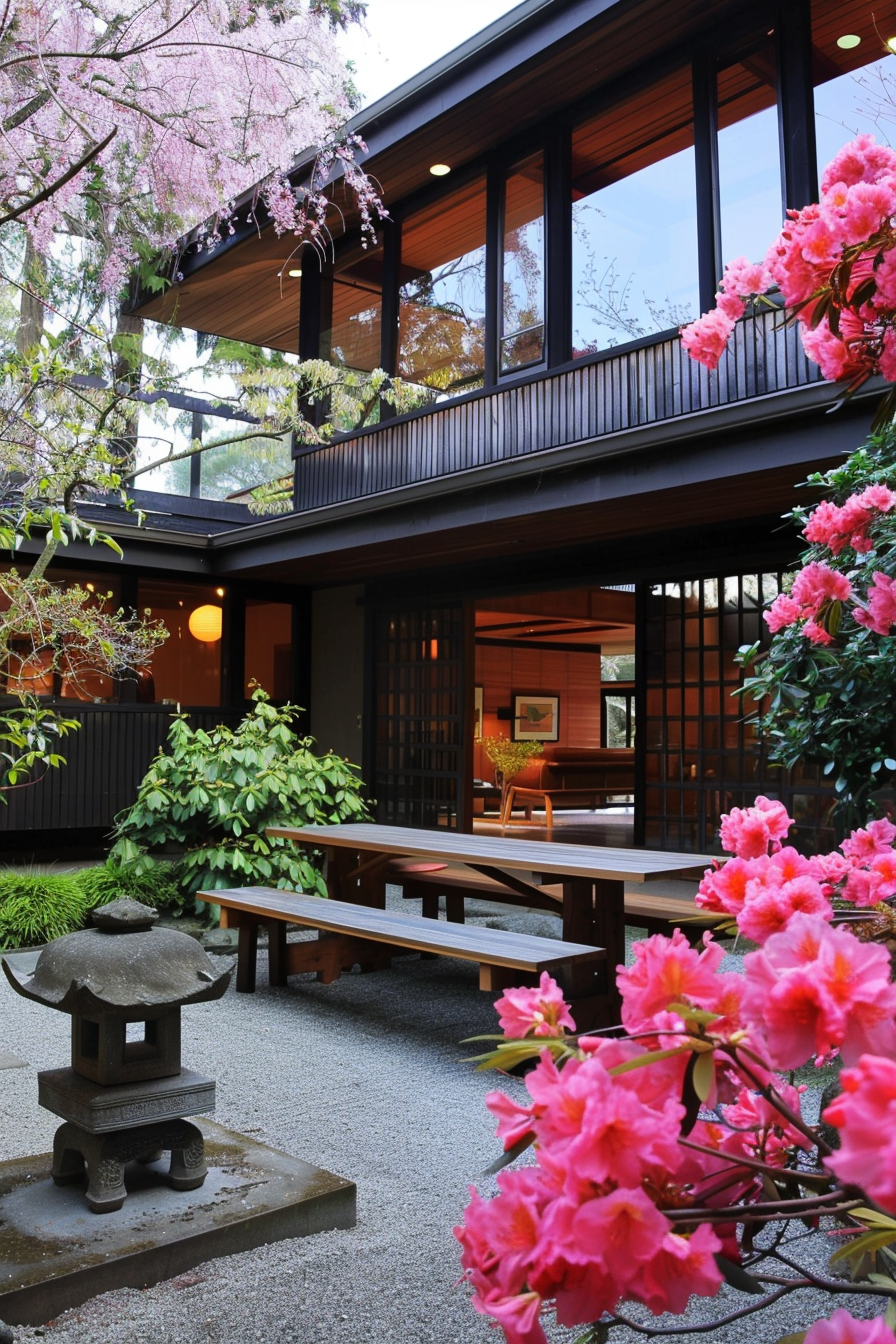
11. Soften Edges with Japanese Spurge
Pachysandra terminalis (Japanese Spurge) is an excellent ground cover for softening edges and filling in gaps. Its lush, green foliage creates a smooth transition between different elements in your garden. Use it around larger plants, along pathways, or under trees to create a seamless, cohesive look.
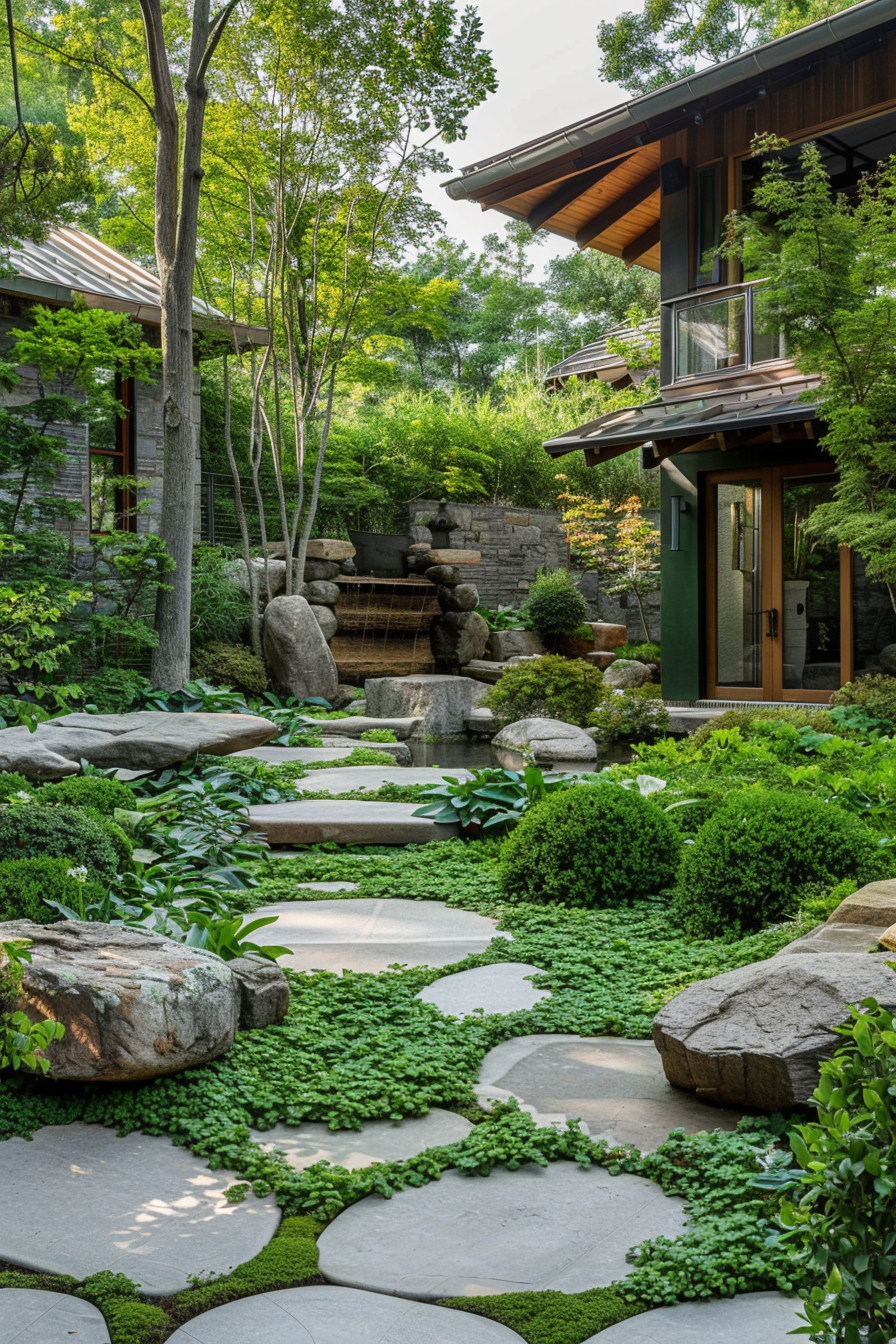
12. Add Drama with Japanese Pieris
Pieris japonica (Japanese Pieris) offers beautiful cascading clusters of white or pink flowers and attractive red-tipped foliage. These shrubs add both color and texture, making them perfect for focal points or as part of a mixed border. They provide year-round interest with their changing leaf colors and elegant flowers.
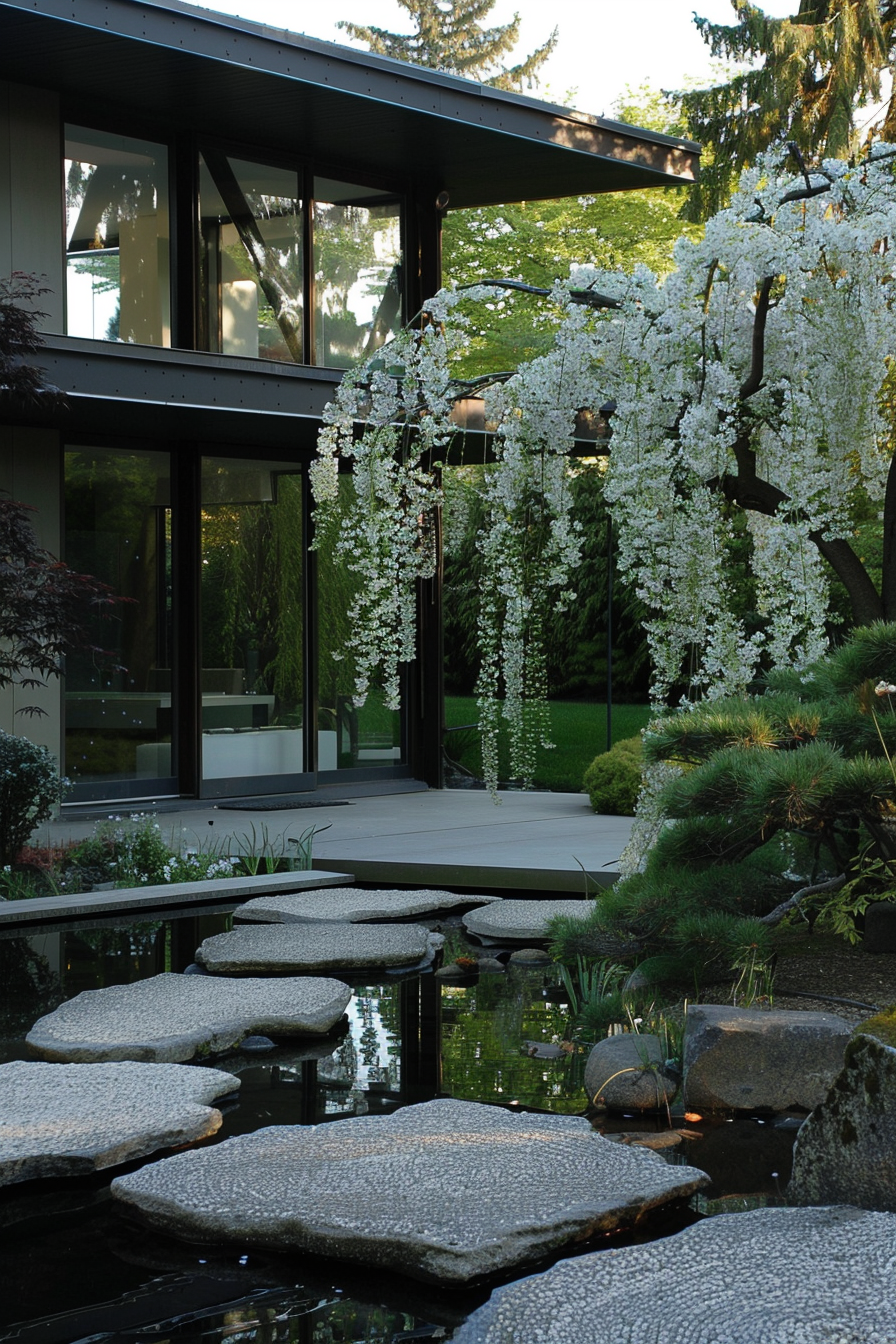
13. Incorporate Hydrangeas for Color and Texture
Hydrangea macrophylla (Hydrangeas) add bold color and lush texture to your garden. Their large, spherical flower heads in shades of blue, pink, and white are visually striking. Plant them in shaded areas or along the edges of your garden to create a soft, romantic look.
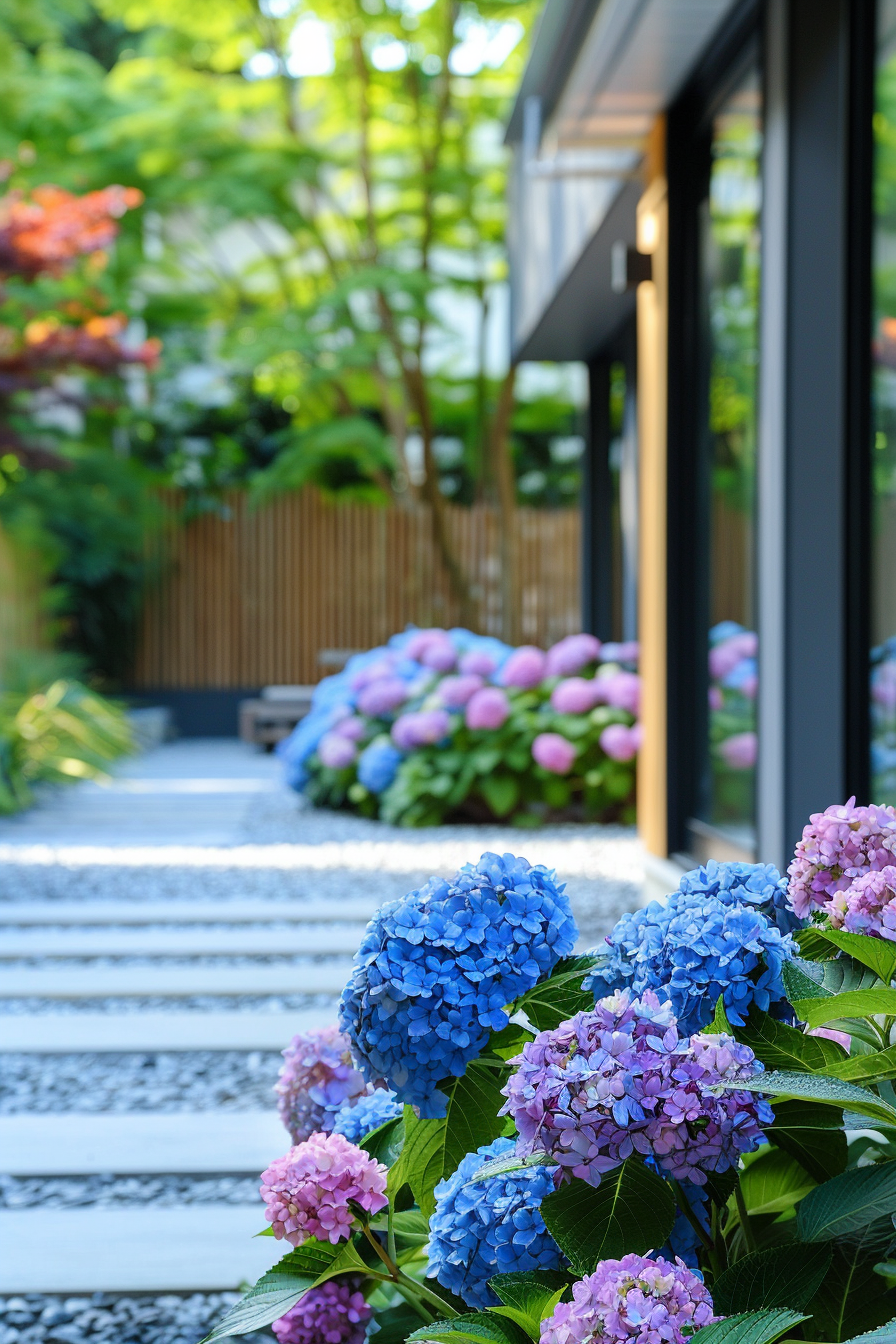
14. Frame Views with Japanese Painted Ferns and Hostas
Combining Athyrium niponicum (Japanese Painted Fern) and Hosta spp. creates a lush, textured frame for views and focal points. Their contrasting leaf shapes and colors provide visual interest and depth. Use them around garden features or along paths to guide the eye and create a sense of depth and enclosure.
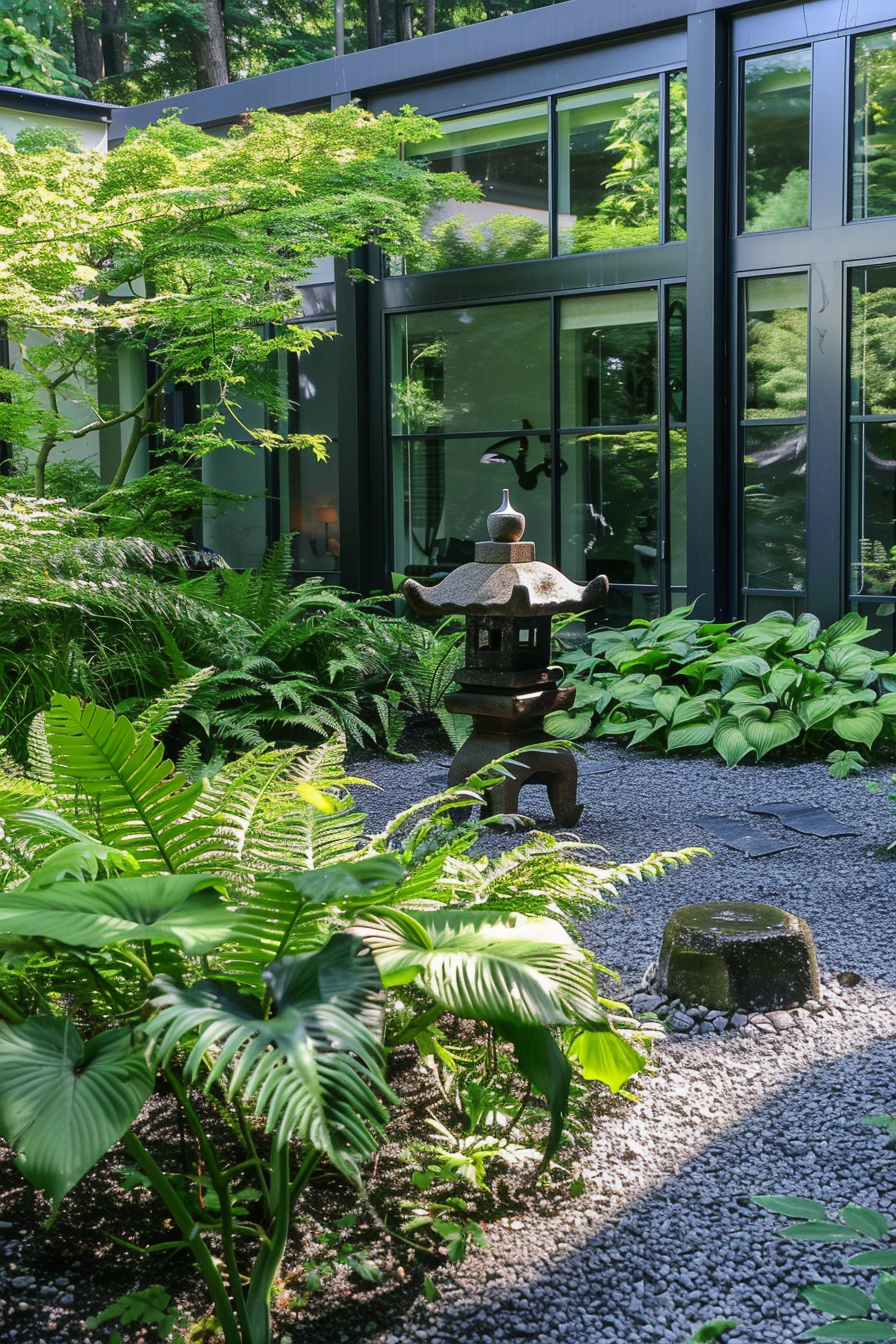
15. Add Sculptural Elements with Sago Palms
Cycas revoluta (Sago Palm) brings a tropical, sculptural element to your garden. Their bold, symmetrical fronds add texture and a touch of exotic flair. Use them as focal points or to create a contrast with the softer foliage of other plants. Sago Palms thrive in containers, making them versatile for any garden layout.
